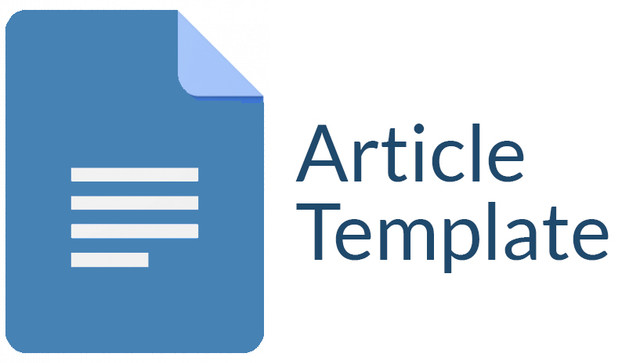Perbandingan Metode Pembelajaran Tradisional dan inovatif terhadap prestasi siswa Pembelajaran Bahasa Indonesia di SDN Jiwan 1 Madiun
Keywords:
Learning Methods, Student Motivation, Teacher PerceptionAbstract
This qualitative study aims to explore and deeply understand the differences in students' and teachers' experiences and perceptions of applying traditional and innovative learning methods in Indonesian language subjects at SDN Jiwan 1 Madiun. Using a qualitative approach, the research employs a case study method to analyze how each method influences students' motivation, participation, and conceptual understanding from their own perspectives. Data were collected through in-depth interviews with several students and teachers, participant observation in the classroom, and document analysis of student journals and lesson plans. The findings show that the innovative learning methods (such as group discussions and the use of interactive media) create a more dynamic and participatory learning environment. Students reported feeling more motivated, active, and confident in asking questions or expressing opinions. In contrast, the traditional methods (lectures and assignments) tended to make students more passive and less engaged in the learning process. From the teachers' perspective, innovative methods were considered more challenging to prepare but yielded more satisfying results in terms of students' understanding and skills. Overall, this study concludes that while academic achievement can be measured quantitatively, the subjective experiences of students and teachers regarding learning methods provide valuable insights into the effectiveness and psychological impact of each method. The findings recommend a blended approach to create a more holistic learning experience.
Downloads
References
Aji, S., & Wulandari, N. (2020). Pengaruh metode pembelajaran berbasis proyek terhadap kreativitas siswa SD. Jurnal Pendidikan Dasar, 11(2), 78-89. https://doi.org/10.1234/jpd.v11i2.456
Andriani, L., & Wijaya, A. (2021). Peran motivasi intrinsik dalam meningkatkan prestasi belajar. Jurnal Psikologi Pendidikan, 16(2), 101-110. https://doi.org/10.4567/jpp.v16i2.101
Creswell, J. W., & Poth, C. N. (2018). Qualitative inquiry & research design: Choosing among five approaches. SAGE Publications.
Dewi, A., & Santoso, E. (2021). Adaptasi kurikulum 2013 di sekolah dasar perkotaan dan pedesaan. Jurnal Pendidikan dan Kebudayaan, 2(3), 121-130. https://doi.org/10.1234/jpk.v2i3.456
Fauzi, A., & Hidayat, S. (2021). Peran metode ceramah dalam meningkatkan motivasi belajar siswa. Jurnal Pendidikan Dasar, 12(3), 154-162. https://doi.org/10.1234/jpd.v12i3.456
Gunawan, I., & Setiawan, B. (2020). Analisis kendala implementasi metode pembelajaran inovatif di sekolah dasar. Jurnal Ilmu Pendidikan, 21(1), 45-56. https://doi.org/10.5678/jip.v21i1.789
Hanif, M., & Pratiwi, S. (2018). Studi kasus penerapan kurikulum di sekolah dasar. Jurnal Kajian Pendidikan Dasar, 6(2), 78-89. https://doi.org/10.9876/jkpd.v6i2.112
Hermawati, R., & Setyawan, D. (2019). Peningkatan pemahaman konsep siswa melalui metode pembelajaran aktif. Jurnal Ilmiah Pendidikan Guru Sekolah Dasar, 8(1), 22-31. https://doi.org/10.1234/jipgsd.v8i1.112
Indrawan, R., & Suryani, S. (2021). Dampak media interaktif terhadap motivasi belajar siswa sekolah dasar. Jurnal Teknologi Pendidikan, 11(2), 98-107. https://doi.org/10.2345/jtp.v11i2.678
Downloads
Published
Issue
Section
License

This work is licensed under a Creative Commons Attribution-ShareAlike 4.0 International License.
Authors who publish with this journal agree to the following terms:
1. Copyright on any article is retained by the author(s).
2. The author grants the journal, right of first publication with the work simultaneously licensed under a Creative Commons Attribution License that allows others to share the work with an acknowledgment of the work’s authorship and initial publication in this journal.
3. Authors are able to enter into separate, additional contractual arrangements for the non-exclusive distribution of the journal’s published version of the work (e.g., post it to an institutional repository or publish it in a book), with an acknowledgment of its initial publication in this journal.
4. Authors are permitted and encouraged to post their work online (e.g., in institutional repositories or on their website) prior to and during the submission process, as it can lead to productive exchanges, as well as earlier and greater citation of published work.
5. The article and any associated published material is distributed under the Creative Commons Attribution-ShareAlike 4.0 International License









